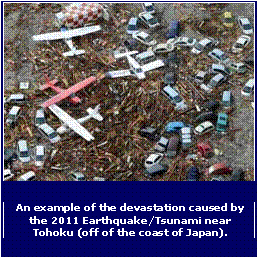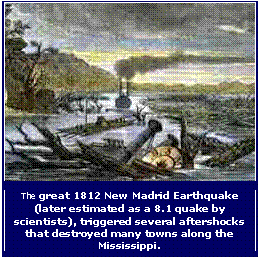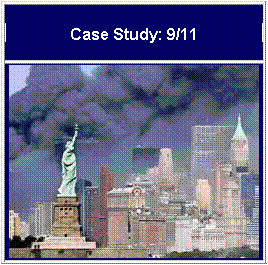By: Timothy Cline, CIRMS
168 Hours. No, we’re not talking about the director’s cut remake of the Oscar-nominated movie starring James Franco. We are, instead, referring to the so-called “hours clauses” that are a part of most earthquake policies. These finite chronologic limits which carefully restrict what constitutes an “occurrence” were introduced into insurance contracts in the 1940s and have been considered an essential tool in managing earthquake exposures ever since. Essential, that is if you’re an insurance carrier. But these provisions could be quite bothersome if you are a policyholder. The language defines an “occurrence” in terms of how much time can elapse before a series of seismic disruptions are no longer considered a “single event”:
 “Each loss by earthquake shall constitute a single claim hereunder; provided that if more than one earthquake shall occur within any period of one-hundred sixty-eight (168) hours during the term of this endorsement, such shocks shall be considered to constitute a single earthquake.”
“Each loss by earthquake shall constitute a single claim hereunder; provided that if more than one earthquake shall occur within any period of one-hundred sixty-eight (168) hours during the term of this endorsement, such shocks shall be considered to constitute a single earthquake.”
168 hours (or even 127 Hours) is painfully long if your arm is trapped at the bottom of a ravine, but is it long enough if you’ve just had a major earthquake?
Defining an “occurrence” is potentially troublesome both in terms of the application of the “per occurrence” limit and the applicability of the percentage deductible. Technically, if an aftershock occurs at hour 169, that’s a separate occurrence and a second deductible would apply. It’s possible that such an hours clause may cut off coverage just minutes or hours prior to an otherwise “included” event.
Catastrophe losses in Japan and New Zealand are prompting many commercial policyholders to consider the impacts of these 168-hour provisions and how they might impact HOAs at the time of loss.

The initial 9.1 magnitude earthquake that struck near the East Coast of Honshu, Japan on March 11, 2011, was followed by three aftershocks that were magnitude 6.6 or greater. (The U. S. Geological Survey describes a 6.0 to 6.9 earthquake as a “strong” earthquake event that can be destructive in areas up to 100 miles across.) The first of these occurred on March 22, 2011 (10 days after the initial quake) and measured magnitude 6.6. Then, on April 7, 2011, a full sixteen days later (26 days after the initial quake), a massive 7.1 magnitude event shook the country. And finally, on April 11, 2011, (a full month later) another magnitude 6.6 aftershock occurred.
Thomas Heaton, the director of the Earthquake Engineering Research Laboratory at the California Institute of Technology was quoted in Scientific American Magazine as saying:
“There’s really no definition of what we call an aftershock or an earthquake. Every time you get an earthquake, it tends to trigger additional earthquakes in the area. Everybody debates when to stop calling it an aftershock. Some people still say that when there is a small earthquake around Missouri, it is an aftershock from the 1812 earthquake… When we look at other magnitude 9s, they have many aftershocks. The average magnitude 9 has one magnitude 8. And there was one magnitude 8 that was hidden in the main earthquake data. They will have 10 magnitude 7s, 10 magnitude 6s and so on. That’s the typical sequence.”
 Yes, you read that correctly. After a magnitude 9, there will most likely be a magnitude 8, followed by ten earthquakes at the magnitudes each full point below that. Consider for a moment the $20 Billion in damages that Southern California sustained in the Northridge Earthquake—and that was a measly magnitude 6.4. Can you imagine the damage we’d see in a 9.0 and the subsequent earthquakes at 6.0 or greater?
Yes, you read that correctly. After a magnitude 9, there will most likely be a magnitude 8, followed by ten earthquakes at the magnitudes each full point below that. Consider for a moment the $20 Billion in damages that Southern California sustained in the Northridge Earthquake—and that was a measly magnitude 6.4. Can you imagine the damage we’d see in a 9.0 and the subsequent earthquakes at 6.0 or greater?
If adjusters were on the scene adjusting losses, multiple deductibles could apply depending on (a) your policy’s definition of occurrence, (b) how far apart the quakes occur, (c) how quickly your carrier can get an adjuster out to your property to determine the extent of the damage, and (d) how thoroughly that adjuster documents the damage he/she sees so that it can be separated out from damage caused by aftershocks beyond your policy’s definition of occurrence.
This begs the question: how do you determine which damage was from which event? That’s anyone’s guess, and this may just be the best news for policyholders. The reinsurance marketplace has been struggling with this issue for years, and at least one reinsurance carrier has weighed-in: reinsurance carrier Swiss RE states, “In the case of more than one event, if it is impossible to allocate any losses, the reinsured shall allocate them to the event whose cause is most likely to have occasioned them.”
From a practical standpoint, it’s highly improbable that carriers will have adjusting teams on the ground soon enough to document what might have been original damage and what might have occurred in a subsequent aftershock. As a result, it’s doubtful that an adjuster would have reasonable means to apply a separate deductible.
In the end, there is nothing a policyholder can do to extend the definition of occurrence in their policy other than making sure your agent requests a definition of occurrence listing 168 hours (some policies list only 72 hours). And even then, it’s possible that an aftershock will occur beyond that seven-day window. Fortunately, you’re not trapped at the bottom of a ravine, hundreds of miles from civilization. You’re in an area with some of the strictest building codes in the world, surrounded by neighbors and loved ones. And if catastrophes in the US have taught us anything, it’s that when disaster strikes, your fellow citizens will come to your aid with the only definition that matters… compassion.
 Case Study: 9/11
Case Study: 9/11
The World Trade Center: September 11, 2001. Two separate towers. Two different planes. Eighteen minutes apart. The question insurers and the policyholders wanted to know was, was this one occurrence or two?
The answer is both. The policyholders sought to have it declared by the courts as two occurrences, thus doubling the payout by the insurance carriers. Understandably, the insurance carriers thought it should be viewed as one occurrence, thus limiting the payout.
The courts looked to the carriers’ “definition of occurrence” in making this determination. They found that the definition was not the same for each carrier and that some carriers used an unambiguous definition, while the definition of “occurrence” used by other carriers was indeed ambiguous and required further legal decision.
The Court of Appeals found that on the binders issued by those “ambiguous” carriers, the term “occurrence” was not defined, and thus without a clear definition, they considered the terrorist acts to be two separate events.
The insurers affected by this verdict faced obligations totaling $2.2 billion instead of $1.1 billion. That’s an extra $1,100,000,000 because of a poorly defined word. Or, if you’re the policyholder in this instance, a very well-defined word: occurrence!

